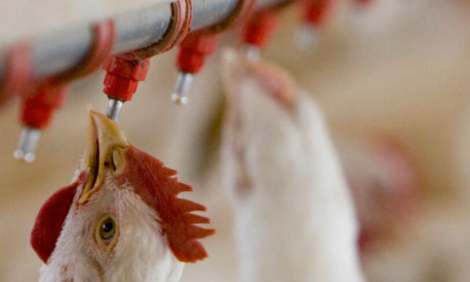



Science and Business Boost Chicken’s Immune System
CANADA - The connection between science and business is an important one and one that’s gaining credence through the Highly Qualified Personnel (HQP) Graduate Scholarship program.Funded under the OMAF and MRA-U of G Partnership, HQP scholarships are awarded to support future generations of researchers, policy-makers and innovators in agri-food. Students gain a better understanding of business models and business management while completing research in their area of study.
The program also includes an important job shadowing component with a government, industry or community partner which provides students with valuable work experience.
In most cases, the work semester also connects well with the student's research interests and future career goals.
“This is a good opportunity for us,” says Ms Neda Barjesteh, a current HQP PhD student in the Ontario Veterinary College’s (OVC) Pathobiology department. “We can go to a company or a government agency where we’d like to work in the future. It’s experience beyond the academic side.”
Ms Barjesteh graduated with her DVM from the University of Kerman and worked as an advisor at a veterinary diagnostic lab for several years before coming to Canada.
Her research at the Ontario Veterinary College focuses on the avian influenza virus and developing new strategies to boost the chicken's immune system against the virus and control shedding of the virus.
"There isn’t a lot of information about the immune systems in chickens especially mucosal immune responses," says Ms Barjesteh. "This research will provide a better understanding of their immune responses, especially in the case of avian influenza virus infection."
Through her research Ms Barjesteh aims to reduce shedding of low pathogenic avian influenza virus.
Applying conventional vaccine has some disadvantages, such as lack of appropriate mucosal immunity, and multiple doses are required in killed vaccines. In addition, vaccines require several days to elicite protective immunity against avian influenza virus.
Besides the vaccination procedure, modulating the host innate responses by applying Toll-like receptor (TLR) ligands can reduce avian influenza virus shedding and inhibit the spread of the virus.
When infected chickens on a farm shed the virus, there is a chance that the virus can spread to other neighbouring farms, resulting in economic losses, says Ms Barjesteh. A lower instance of shedding will benefit the poultry industry.
Ms Barjesteh is studying the efficacy of TLR ligands in chickens and how to apply them to get the best results, by looking at different doses and different routes of administering them to chickens.
She will then analyse avian influenza shedding to determine the best tools for administering these ligand molecules. In addition, she is studying antiviral responses and their mechanisms which might be correlated with the reduction of avian influenza virus shedding at the site of innate immune responses such as the trachea and cecal tonsil in chickens.
Ultimately, she aims to determine a safe, cheap and easy method to apply these ligands in chickens and reduce spread of avian influenza virus.
The Highly Qualified Personnel program under the OMAFRA KTT program has proven it’s a successful formula. Beyond making science accessible and applicable, it is the opportunity to bring science to the marketplace.
“The HQP has helped me so much,” says Neda. “I have research that I believe could be used for industry. It is not just research for the shelf.”
Students are exposed to business practices, commercialisation (intellectual property and license protection), as well as the interactions between society and the agri-food system.
For example, says Ms Berjesteh, “students explore the steps involved to take a product produced in the laboratory, to a proposal to put the product into the business economy.
They look at the target audience for that product, how to increase the consumer’s knowledge of that product and demonstrate the value of the product – all while considering government regulations, consumers, retailers, society and media.”








